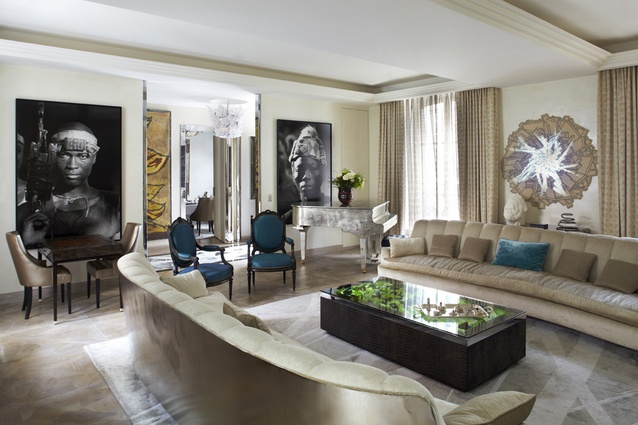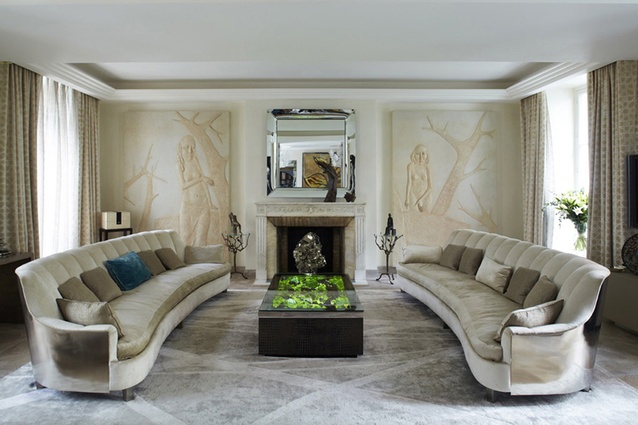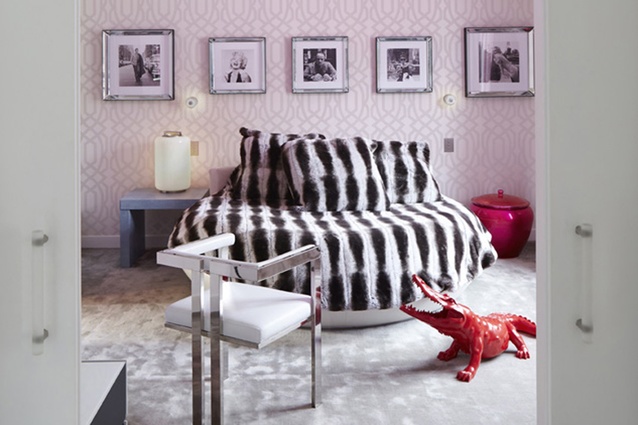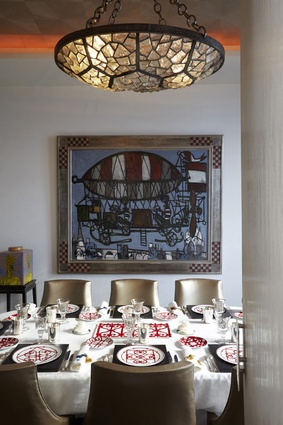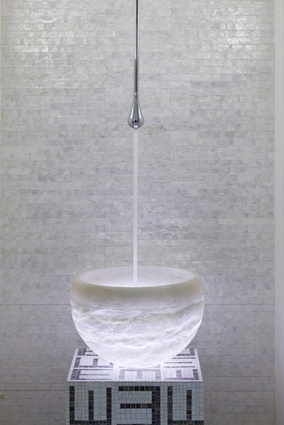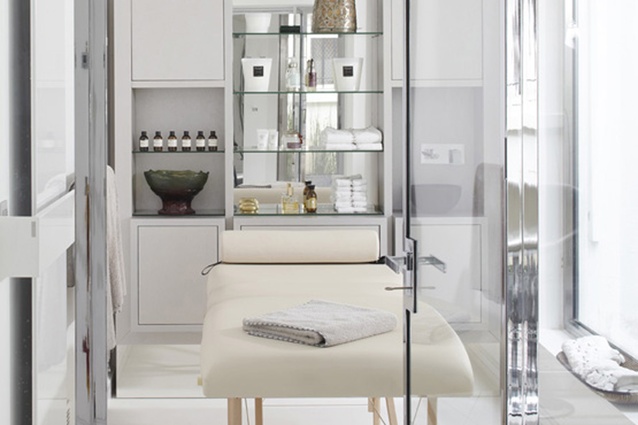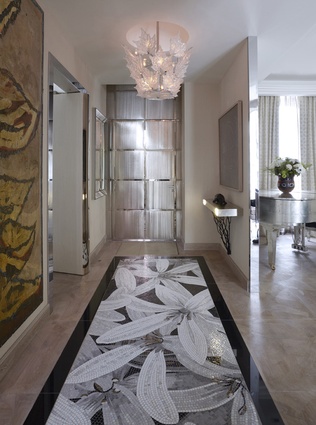Paris Match
The affable Stephanie Coutas designed this four-storeyed, 400m² Parisian townhouse for herself. “I am a very difficult client,” she confesses. “When I work [for someone else], I am efficient and the process is simple. I understand what they want, I approach it with conviction and make it happen [but, with this project], I drove myself crazy!”
At first glance, Villa Said (as it’s known) is indeed a product of creative madness: shagreen cigar boxes share space with a coffee table radiating with coloured Murano glass; Patrick Robert’s sobering black-and-white war portraits stand guard beside a grand piano that would have made Liberace proud; and the entry sequence is redolent with floral motifs. The interior surfaces are made of quartz, marble, mother-of-pearl, mosaic, fabrics and crystal.
And as if that weren’t enough, the artwork and furniture are an even bigger bouquet of influences and eras: Keith Haring, Christian Dior (circa 1960) and an almost architectonic matrix of Peruvian pyrite. There is an ongoing tension between great contemporary art pieces and the borderline kitsch, between joie de vivre and the sad, elongated faces of much of the artwork here. There is a futuristic element, a classical colour scheme, and a consumerist aesthetic that falls somewhere between luxury brands and a disdain for the same. It’s as if postmodernism’s ‘anything goes’ attitude had found a neoclassical, somewhat romantic enclave in the small alleyways of the City of Light.
Coutas’ design process begins by understanding the architectural shell first: “Every place has something to be revealed. I always build around the house, respecting the architecture… it has a soul and a history,” she says.
The original 19th-century townhouse had lots of tiny rooms and “needed to breathe”; this led Coutas, in 2009, to remove walls and improve traffic flow. Along the way, she modernised and completely re-invented the interior. The four-bedroomed home now also boasts a steam room, movie theatre, gym, swimming pool and massage room, each space with its own character and highly considered palette.
After understanding the architectural space, Coutas selected one or two main pieces that would act as focal points for each room. Throughout the house, it is often artworks or furniture she designed herself that creates the first impression. “Then come the details,” she says.
Villa Said was imagined as a family home for herself, her partner and their two children. She calls the renovation process “18 months of intensive work” in which this former fashion designer put many of her tricks of the trade to good use.
“Style is about reflecting a personality. A house should have the vibe of the person or family who lives in it,” says Coutas. “My job is about finding the right balance between the people I am working for and my natural taste for sophistication, leading them to go a little further than they would have on their own.”
Stephanie’s day-to-day projects include private homes, hotels, hospitality, yachts. Her work has seen her re-imagine villas in Cairo and a palace in the Middle East.
“A stylish room usually creates harmony, no matter if it’s bohemian chic or very dressy; it gives a sense of calm and yet creates astonishment,” she says.
Coutas often speaks of “vibes”, mentioning a need for romance in the overall mood of the place and the need for houses to “connect” with people. In her own home, “there could be 10 children in the swimming pool but the house still feels romantic,” she says. She is particularly fond of the neutral-coloured environs of her bedroom and is most proud of the Robert Combas painting in the gym. But it is the 17th-century church bench she bought when she was 20 and which resides in her partner’s dressing area that seems to best encapsulate Coutas’ design ethos.
“It has nothing to do with sophistication. It’s old wood… [yet] it always fits,” she says speaking of the many differently styled homes where the pew has featured. “If you love it, it fits.”

